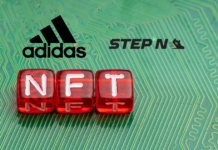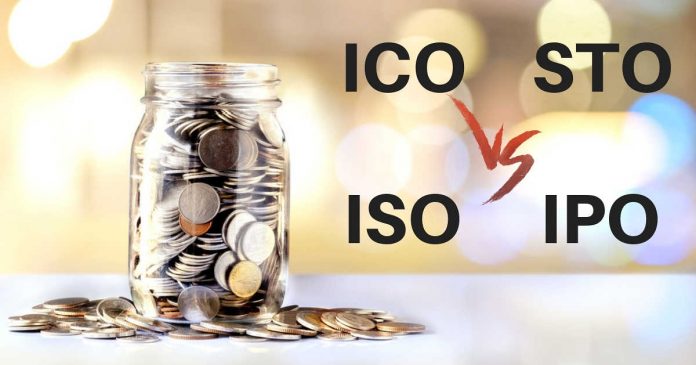Growth or expansion of any business requires capital investment. If the project is capital intensive chances of raising the entire capital from your own pockets is not a feasible option. Generally speaking, many companies raise capital from external sources by conducting an ICO, IPO, ISO or STO.
Debit capital and Equity capital are two major platforms that underpin capital requirements. While Debit capital encompasses the borrowing of capital from banks or family and friends, Equity Capital is where the capital is raised in exchange for a portion of the business. The traditional Equity Capital raising method is more complicated and is not proving to be quite appealing to the millennials.
Beyond Equity Capital are the government grants, crowdfunding and corporate investors who support the fundraising. Most of the times the legacy fundraising methods like IPO’s are accessible just to the existing giants for expansions.
In the last decade, startups have mushroomed across the globe. But 82% of the startups failed because of the cash flow challenges. The growth of potential startups retards due to multiple capital raising challenges
Thanks to the new age of ICOs, STOs, and ISOs that allow fundraising opportunities for startups. This article explains to you in detail how IPOs, ICOs, ISOs, and STOs differ at fundraising level.
Initial Public Offering or IPO was the first foundation of the modern day financial system. The first IPO was offered to the public in 1602 by the Dutch East India Company. It is a type of public offering where a share of the business is offered to an institutional or retail investor.
The company gives up a part of its companies holding to the shareholders who then trade it on the stock exchange. A privately held company goes for an IPO and the process is called going public. They give a massive fundraising opportunity to the companies.
IPOs are always required to list on the stock exchanges and before a company goes public, it needs to file a registration statement with securities governance bodies.
In the US an IPO needs to be approved by the SEC (Securities and Exchange Commission) before it goes public. The process is indeed grueling and requires a lot of work. Investment banks like Goldman Sachs help companies sail through the complex IPO process. These banks charge 3-7% of IPOs total sales prices as a fee, throwing startups completely out of this fundraising race.
The due diligence and regulatory filings are time-consuming which take around 8-9 months to approve the IPO. The inside investors can sell off their shares 6 months after the company went public.
The existing process is complex and does not support capital raising opportunities for small businesses and startups.
Popularly known as ICO, the term started making rounds in among startups as the cryptocurrency market matured. It is a kind of crowdfunding model where digital tokens are distributed among the early backers and token sale participants to fund the project development.
The mechanism is quite similar to IPO but it does not involve shares but the participants of an ICO receive digital tokens that can be liquidated into fiat or other cryptocurrencies in the market.
The major difference between ICOs and IPOs are:
- An ICO does not give token owners ownership in the company.
- The ICO participants receive a token equivalent of his investment in the project
- The duration of an ICO is often very short.
- Like certain IPOs where the purchase is limited only to institutional investors, ICO can be purchased by anyone.
- ICOs are completely unregulated right now and do not require to create legal documents like prospectus to go public.
Although there are not governing or regulatory bodies that control the operations of ICO’s, the SEC and other bodies are trying to build a regulatory framework around them to protect participant’s rights. ICOs are risk intensive investment and thorough project research must be conducted before one participates
The ICO model proved to be very successful to raise massive capital, however, because of the unregulated ecosystem, a few ICOs have scammed investors. The STO or Security token Offering is a legal investment contract where digital tokens are issued to the investors but with an underlying investment asset that may be stocks, bonds or funds.
A security token offering (STO) is ownership information that offers financial security to the investors in the form of a digital token.
STO Vs ICO
- While the STOs that are given in exchange of funds are the same as in case of ICOs, the characteristics of the tokens are different.
- An ICO token is primarily a utility token while STOs are security certificates.
- STOs are governed by regulations while ICOs are currently free of any regulations.
- STOs owning conditions are more rigid than ICOs which limits STOs access to a wider public.
- Fundraising is primarily driven by accredited investors.
STO vs IPO
The process of issuing STOs is similar to issuing IPO where physical or digital certificates are distributed among shareholders but in the case of STOs, the digital blockchain tokens are distributed.
- STOs and IPOs are regulated by governing bodies.
- STOs can be offered by any kind of legal company while for IPO a company must be private.
- STOs are an asset-based token while IPO is a shareholding.
- Raising funds using STOs is cost effective and less time intensive as no large fees are paid to investment banks.
- STOs are easy and cost-effective to manage post-sale.
Initial Securities Offering (ISO)
Commonly known as ISOs, these are securities tokens on the blockchain. ISO and IPO are quite similar but ISOs are more like a token but not like an ICO utility token.
ISOs are transparent and allow business to raise money but also offers the public more information before making an investment decision.
While the ISO is liberally regulated, they are not under control of highly strict guidelines like the SEC. They are more of a tokenized offering like ICOs but need to be compliant to specific regulatory guidelines.




























